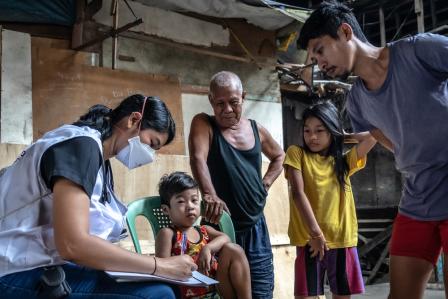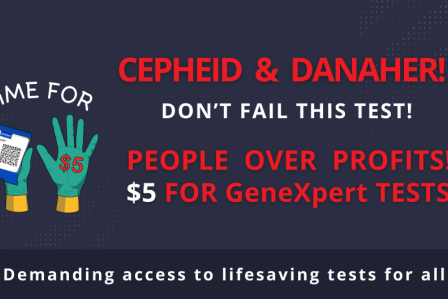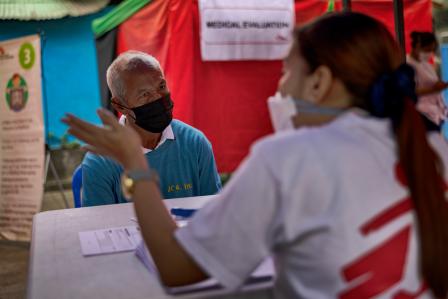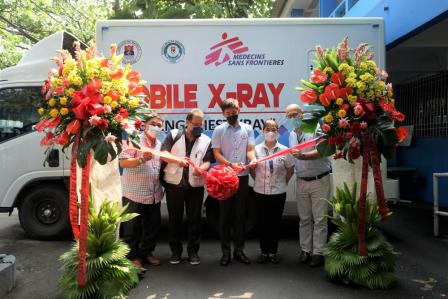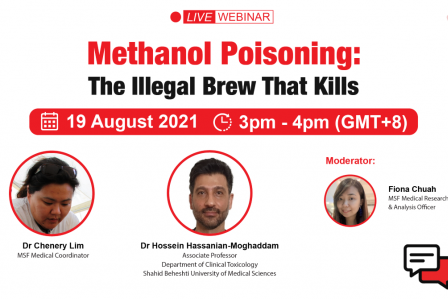The Philippines: Facing the impact of COVID-19 on tuberculosis in the slums of Manila
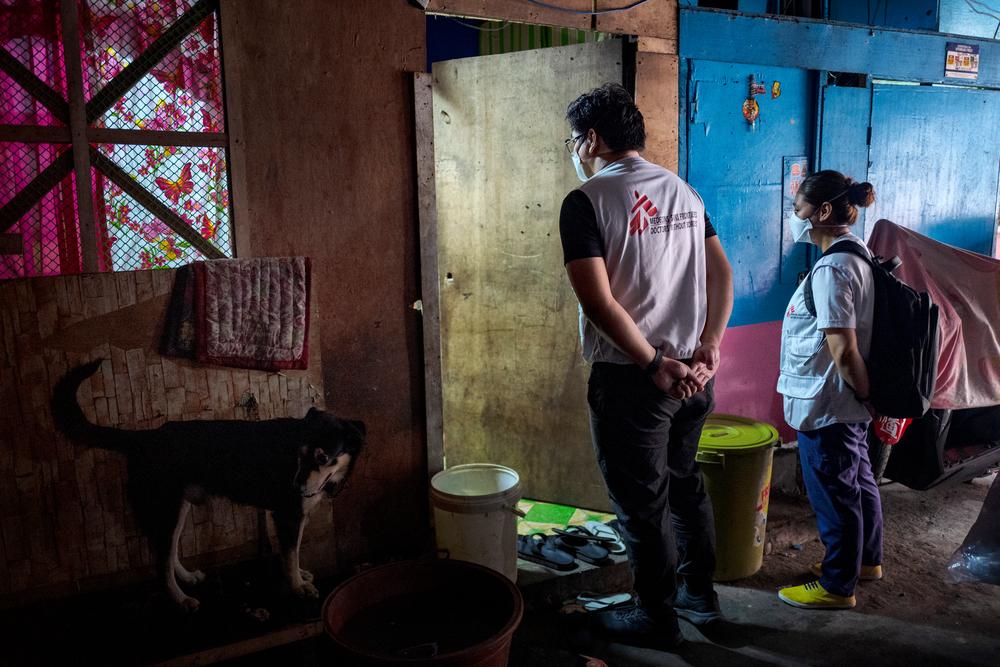
Doctors Without Borders patient support team Christian Jay Hontiveros and Belen Rance conduct contact tracing of households with confirmed tuberculosis patients, at Aroma neighborhood in Tondo, Manila. Philippines, 2023. © Ezra Acayan
While COVID-19 raised awareness of the risks of airborne disease in the general population, vulnerable populations - such as the urban poor - were exposed to an increased risk of tuberculosis (TB) infection. Prolonged lockdowns and disruptions to TB services in the Philippines meant those in overcrowded areas faced a double risk. To address this, a Doctors Without Borders / Médecins Sans Frontières (MSF) team with a screening truck is working to track TB in some of the most densely populated areas in Southeast Asia.
Sitting in front of her grocery stall, which is also the home she shares with ten family members, Amalia, 42, does not mention the name of the disease she discovered in May 2022. In this building in the slum of Tondo, Manila, the lack of privacy is such that one prefers not to say the word ‘tuberculosis’ for fear of scaring neighbors. Amalia lives in Smokey Mountain, a neighborhood named after the now-closed, but still present, garbage heap from which toxic fumes emitted between the 1960s and 1990s.
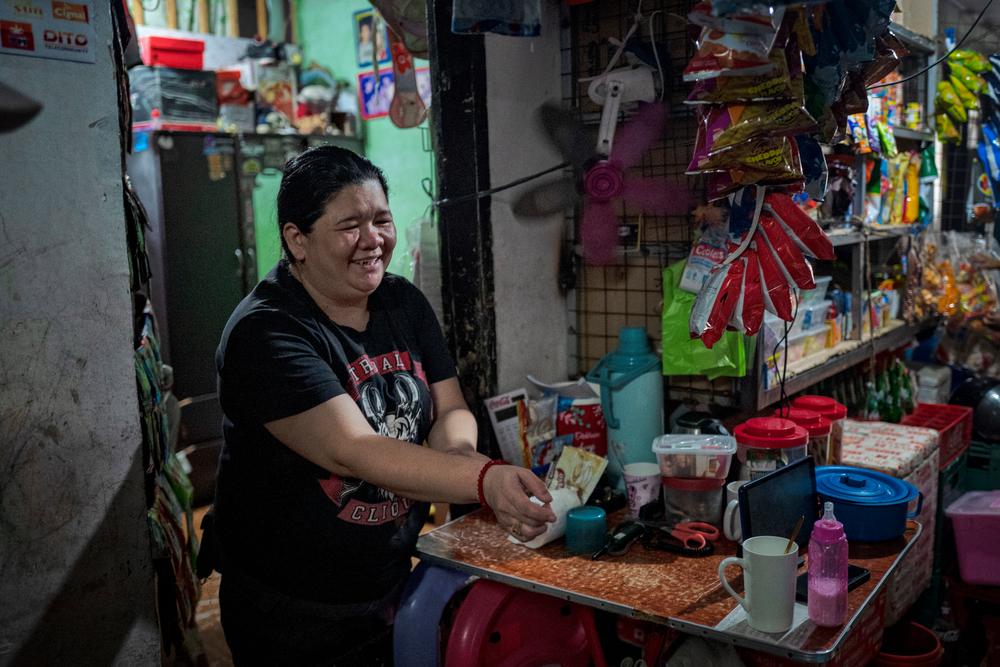
Amalia, a former Doctors Without Borders patient, runs a small store in front of her home in the Smokey Mountain neighborhood, Tondo, Manila. Philippines, 2023. © Ezra Acayan
It was not far from this hill that Amalia went to the Doctors Without Borders X-ray truck in early May 2022. Amalia told the Doctors Without Borders team that she had a fever every afternoon but that it was resolved with paracetamol. The radiologist took an X-ray of her lungs and the team collected her sputum to test for TB infection. A few days later, the diagnosis was confirmed in the laboratory. A patient support team comprising nurses and a therapist contacted Amalia and went to her home to tell her of the diagnosis and to reassure her that she could recover by carefully following a six-month course of treatment, free of charge, at her health center. Emotion overwhelms her at the mention of this moment. "I immediately thought of my mother, that was the cause of her death. I thought, maybe this will kill me too."
The TB bacterium is spread through the air when an infected person sneezes, coughs or talks. It can be easily transmitted in confined spaces and can remain dormant in the body for months or years without becoming active disease.
TB active case finding in Tondo, Manila
More than 650,000 people live clustered in Tondo, an area of about nine square kilometers stretching between the port and the business district of Manila. It is one of the most densely populated slums in the world. For nearly two years, strict anti-COVID-19 measures contributed to overcrowding, with neighborhoods and homes completely confined, and no one allowed out for days at a time.
In Tondo, generations lived together in small, poorly ventilated rooms. Children stayed at home for two and a half years as schools were closed throughout the country. Many of the men, who were primary breadwinners, could no longer work. Dr Trisha Thadhani, a Filipino doctor specializing in TB on the Doctors Without Borders project, explains: "As elsewhere, restrictions on movement, concerns over the risks of visiting health facilities, shortages of medical personnel and the closure of health facilities led to a sharp drop in the number of diagnosed TB cases, as well as disruptions in TB treatment.”
As a result, cases could not be detected or treated; many people may have unknowingly been infected. In Tondo, Doctors Without Borders launched a TB "active case finding" project in collaboration with the Manila Department of Health. The aim is to screen people, trace contact cases, refer TB-positive patients to local health centers and follow up to ensure they adhere to treatment regime, helping to save lives and break the chains of transmission.
Since May 2022, with the prior agreement and support of the authorities and the community, an Doctors Without Borders mobile team has travelled through the barangays (neighborhoods) of Tondo with a truck containing radiological equipment. The aim is to make screening accessible and available as close as possible to where community members live and work. But the presence of this device alone is not enough to encourage the population to get screened.
- Dr Ruth Roxas, manager, active case-finding (ACF) activities
Among the fears is potentially discovering an infection and being rejected by family and neighbors who are afraid of getting sick themselves, or losing one's job. Getting treatment takes time, you have to go to the health center on a regular basis for six months to refill your medication, and transportation to the health centers can be expensive. "Often, the priority is not health, but earning enough money to support the family," says Ruth. Doctors Without Borders' health promotion team, in collaboration with local authorities, is trying to overcome these obstacles.
Mobile X-ray truck for TB screening
As early as 8 am, the loudspeakers in the barangays announce loud and clear: "Free lung X-ray!" Every day, in good spirits, the team, most of whom are themselves from Tondo, walk down each of the winding alleys of the neighborhood to encourage the community to get screened, knocking on every door one by one. They also conduct awareness-raising sessions to address misconceptions about the disease: TB can be cured and treatment reduces the risk of infection in the household. Now, between 400 and 450 people come to be screened in the Doctors Without Borders truck each week.
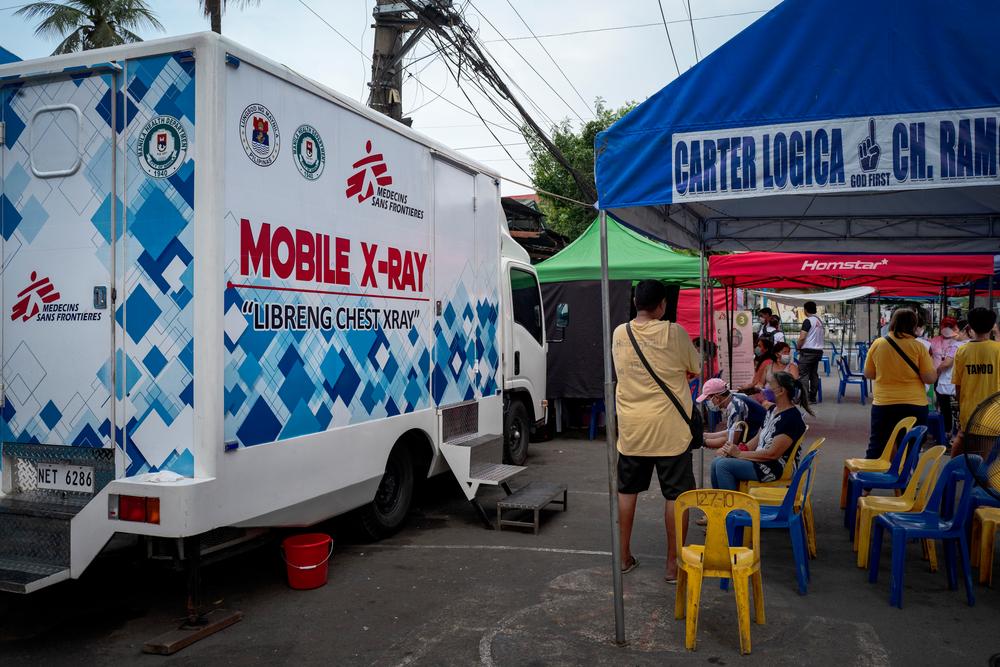
Mobile x-ray truck at one of Doctors Without Borders' active case finding sites for tuberculosis. Philippines, 2023. © Ezra Acayan
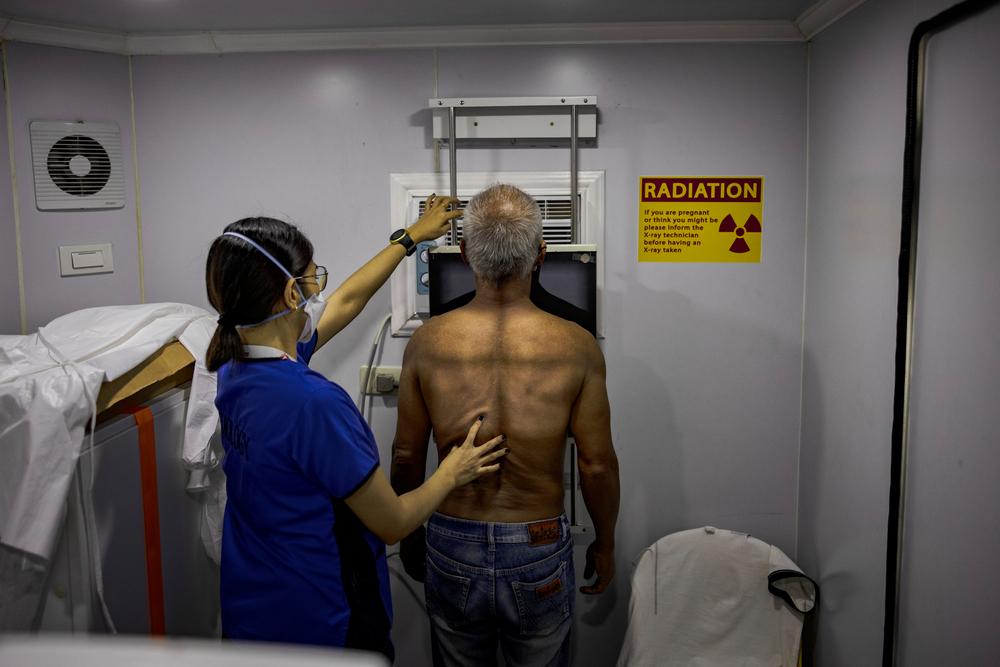
A patient is given a free chest x-ray at one of Doctors Without Borders' active case finding sites for tuberculosis. Philippines, 2023. © Ezra Acayan
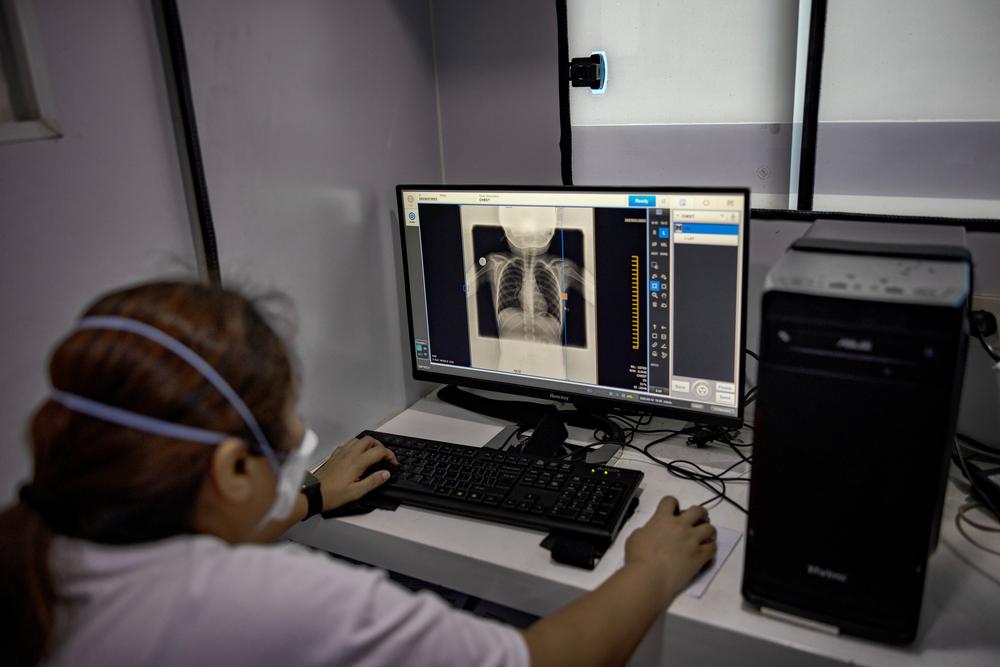
A Doctors Without Borders personnel processes a chest x-ray at one of Doctors Without Borders' active case finding sites for tuberculosis. Philippines, 2023. © Ezra Acayan
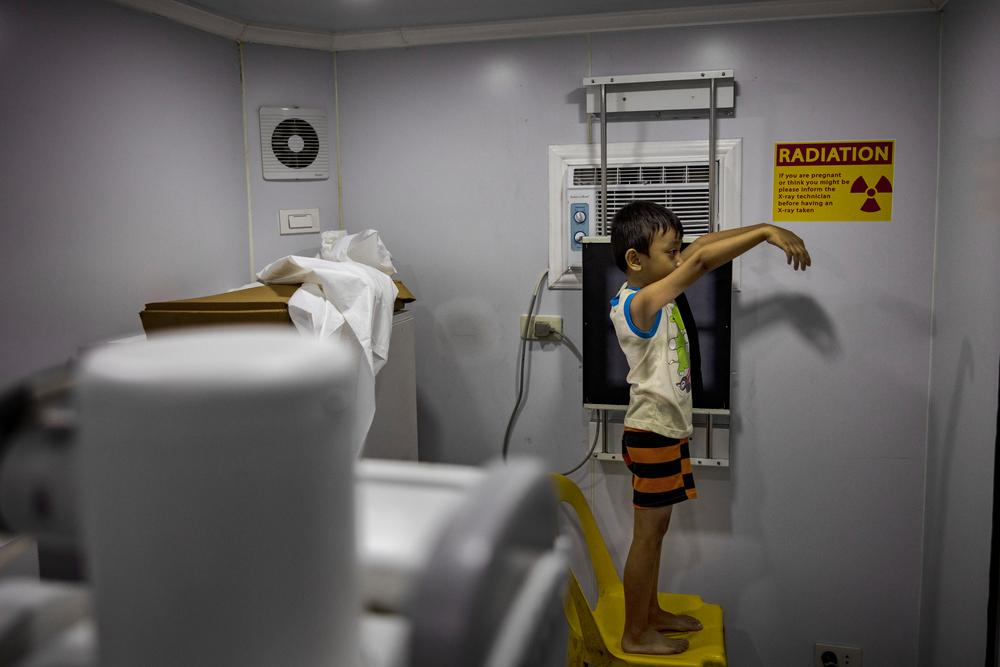
A five-year-old patient is given a free chest x-ray at one of Doctors Without Borders active case finding sites for tuberculosis. Philippines, 2023. © Ezra Acayan
Screening such a large number of people with a single X-ray machine and a radiologist could be difficult without the use of a small, innovative black box. It contains a software program using artificial intelligence, a "computer-aided diagnosis" (CADx). Capable of recognizing TB very quickly on chest X-rays, it speeds up the screening process significantly.
When tuberculosis is suspected after an X-ray analysis, the patient's sputum is collected and sent to the laboratories of the Department of Health in Manila, where machines called "GeneXpert" can make a diagnosis within a few days. The Doctors Without Borders patient support team then takes over the task of accompanying newly diagnosed patients and searching for contact cases in the household. Finding these people in the maze of Tondo's tiny alleys is no easy task. It takes patience. Sometimes you have to walk through several shacks made of corrugated iron and wooden pallets that seem to miraculously stand on top of each other, surrounded by emaciated dogs that bark continuously. Knocking on many doors. Retracing one's steps. Sometimes having to return the next day.
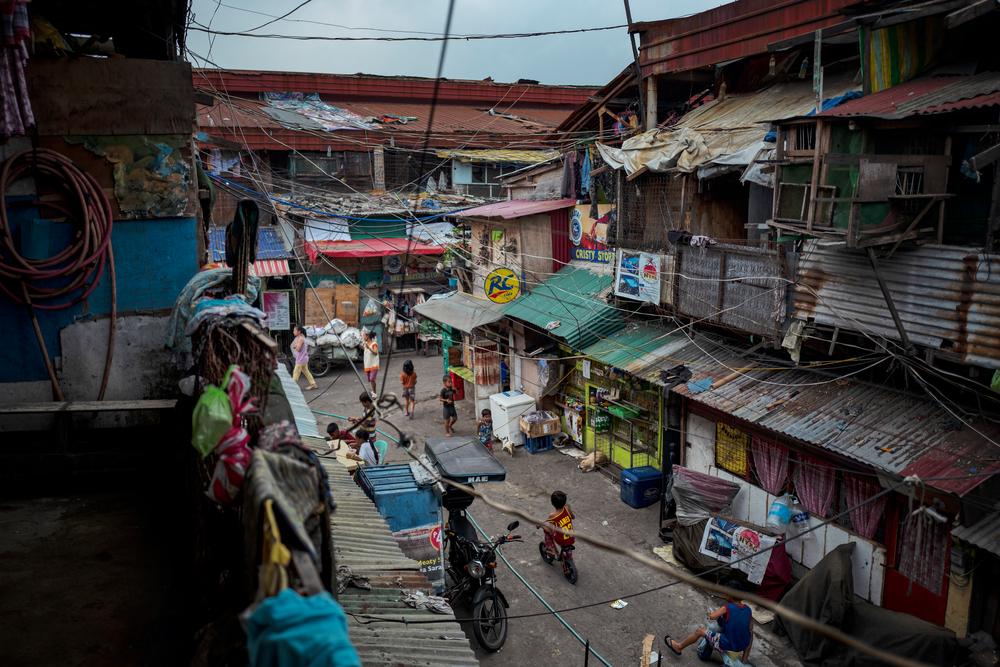
Tondo is one of the poorest and most densely populated slums in the Philippines. To find patients, Doctors Without Borders personnel often have to walk through shacks made of corrugated iron and wooden pallets that seem to stand on top of each other. Philippines, 2023. © Ezra Acayan
Households’ contact tracing to prevent further spread of TB
That’s how Doctors Without Borders teams encouraged Amalia to start treatment at her health center, and family members living in the same house were invited to be screened as well. Her grandchildren were examined and put on preventive treatment for three months by the Doctors Without Borders doctor with their parents' consent.
"Infants and young children are particularly prone to severe and fatal forms of the disease," says Trisha. "However, the diagnosis of children is more complex than in adults, as it is difficult for them to produce the sputum needed for laboratory analysis. In addition, there are nutritional deficiencies in the barangays of Tondo, making the children even more vulnerable. Protecting children through preventative measures in parallel with the treatment of adults when contamination is suspected is a priority for us”. Our medical teams propose preventive treatment for contact cases after clinical diagnosis for children under five years old and after skin tests for children between five and 14 years old.
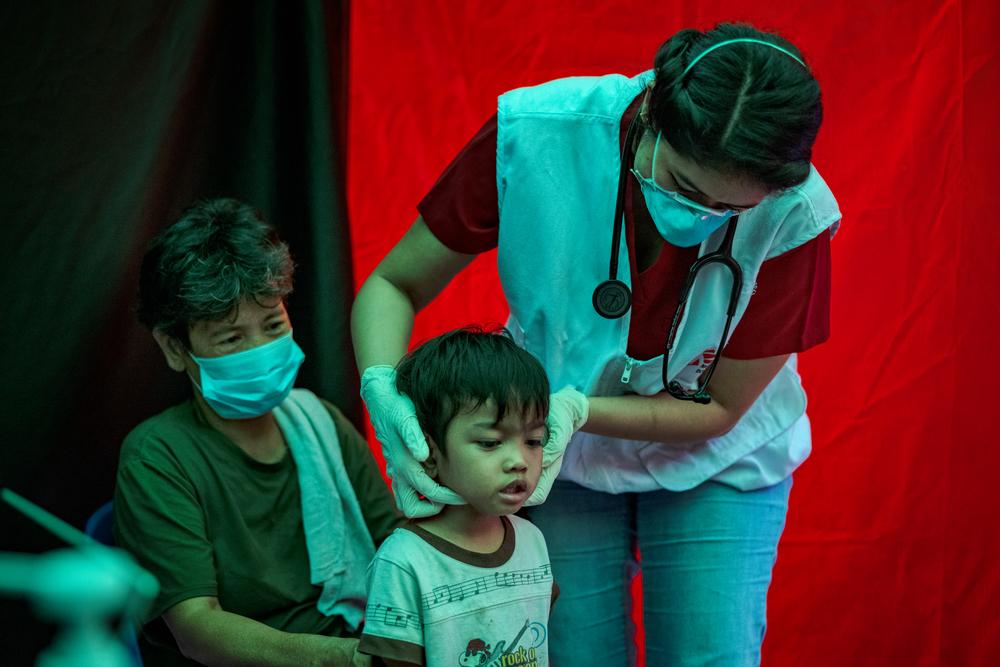
Agustina watches as Trisha Thadhani, Doctors Without Borders TB doctor, conducts a medical evaluation of her grandson Ion, at one of Doctors Without Borders' active case finding sites for tuberculosis in Tondo, Manila. Philippines, 2023. © Ezra Acayan
Amalia is now cured. She has since opened her small grocery store and can once again embrace her grandchildren without worry. The rate of confirmed TB cases among the population our teams have screened so far, which is more than 6,400 people in the last ten months, is on an average five per cent. This high figure confirms our initial hypothesis of a likely increase in TB cases following the COVID-19 pandemic.
Our teams continue to track down TB door after door, day after day. "It's a drop in the ocean," says Trisha, but she remains hopeful that the gap left in the pandemic's wake can be filled by the joint effort of TB control stakeholders in Tondo and elsewhere.
* https://www.who.int/en/news-room/fact-sheets/detail/tuberculosis
